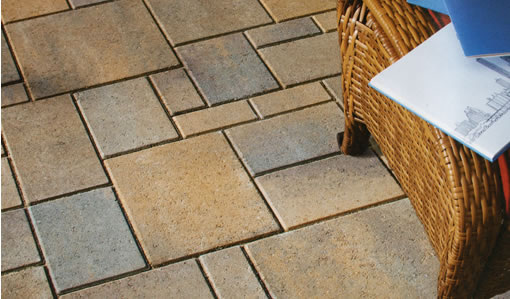The simple technology of interlocking pavers has been around since ancient Rome, and pavers continue to be an attractive and practical design solution today. Pavers add interest and character as well as durability to both residential and commercial landscapes.
In home design, curb appeal is important. Pavers offer style and resilience to driveways and walkways. They add elegance to the approach to a home. As an alternative to asphalt, pavers hold their integrity over the long run. They do not crack like concrete can. Should repair be necessary, it is an easy matter of popping up a paver and replacing it.
While pavers make for a distinctive pathway, you can consider them as well for other areas of the landscape. They are the ideal material for patios and terraces. The ability to replace individual pavers makes them a good choice for high traffic areas like pool surrounds and courtyards.
Pavers bring old world elegance to decking and balconies. They also provide stability to utilitarian paces such as parking areas. Pavers can withstand the heavy duty traffic and still look great.
There are so many options to choose from when designing and selecting interlocking pavers. Surface finishes may be smooth or textured. Colors cover a wide spectrum and may be alternated within a design. Layouts may follow both concentric and linear patterns, depending on the space and your preferences.
Pavers can serve many purposes in landscape design. They can be used to break up outdoor areas to create different spaces. They are also extremely effective in aiding erosion control on a property. Some pavers are constructed from a percentage of recycled material, making them a sound ecological option. Since repairing pavers requires a minimum of waste, they are truly a green-minded choice of construction material.
When it is time to decide what material to use for a residential or commercial project, consider interlocking pavers for stability, style and enduring beauty.
In home design, curb appeal is important. Pavers offer style and resilience to driveways and walkways. They add elegance to the approach to a home. As an alternative to asphalt, pavers hold their integrity over the long run. They do not crack like concrete can. Should repair be necessary, it is an easy matter of popping up a paver and replacing it.
While pavers make for a distinctive pathway, you can consider them as well for other areas of the landscape. They are the ideal material for patios and terraces. The ability to replace individual pavers makes them a good choice for high traffic areas like pool surrounds and courtyards.
Pavers bring old world elegance to decking and balconies. They also provide stability to utilitarian paces such as parking areas. Pavers can withstand the heavy duty traffic and still look great.
There are so many options to choose from when designing and selecting interlocking pavers. Surface finishes may be smooth or textured. Colors cover a wide spectrum and may be alternated within a design. Layouts may follow both concentric and linear patterns, depending on the space and your preferences.
Pavers can serve many purposes in landscape design. They can be used to break up outdoor areas to create different spaces. They are also extremely effective in aiding erosion control on a property. Some pavers are constructed from a percentage of recycled material, making them a sound ecological option. Since repairing pavers requires a minimum of waste, they are truly a green-minded choice of construction material.
When it is time to decide what material to use for a residential or commercial project, consider interlocking pavers for stability, style and enduring beauty.

 RSS Feed
RSS Feed